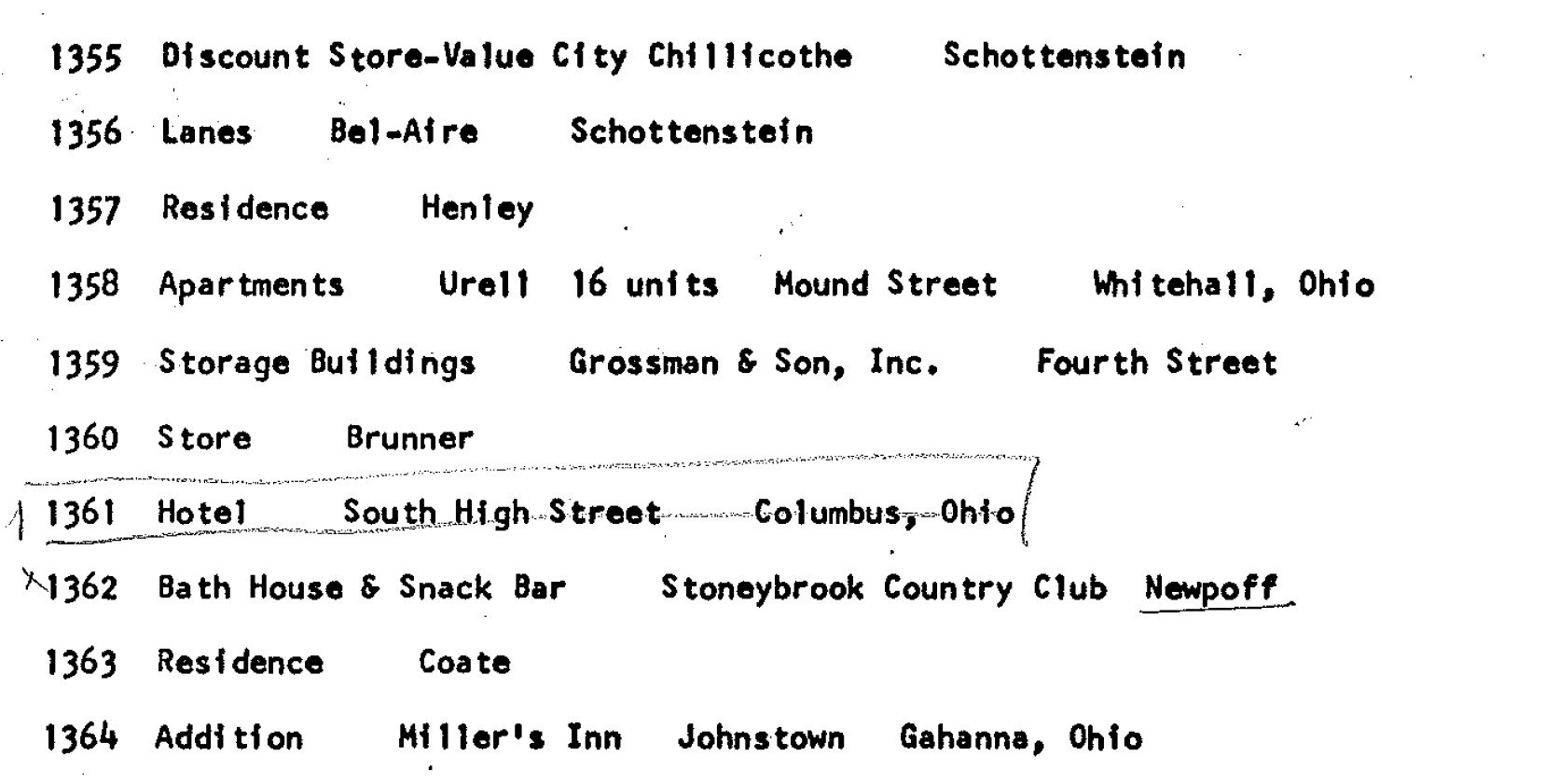History of the South Wind Motel
Midwestern Americans are second only to the Irish in their kindness and spirit of hospitality. If Ohio is the “heart of it all,” then Columbus is what W.B. Yates might call the “deep heart’s core.” By 1960, the interstate highway had wrapped its way through the central city of Columbus like a coronary artery. The community just south of downtown was officially named German Village, and German Village residents were just beginning to organize themselves, create commissions, and pass ordinances with the aim of preserving the historic architecture and charming character of the neighborhood.
Then comes the South Wind Motel.
Designed by prominent local architect Harold Schofield, the South Wind Motel opened its doors in 1959 advertising modern amenities like 21-inch color TVs, wall-to-wall carpeting, and a continental breakfast. Its original owner was Benny Newpoff, an avid golfer who beat Jack Nicklaus at a pro-am qualifier that same year.
In designing the building, Schofield drew inspiration from Frank Lloyd Wright’s Prairie Style of architecture, characterized by dramatic horizontal lines and broad eave overhangs meant to evoke the expansive Midwestern landscape. Buildings of this style reflect an all-encompassing philosophy that Wright termed “Organic Architecture,” a style also seen in the beautiful Usonian homes in the unique Rush Creek Village in Worthington, Ohio. According to a New York Times article, “Rush Creek is the country’s most enduring and successful — and undiscovered — middle-class community built according to Wright's principles.”
Today, the South Wind Motel is among the few remaining commercial buildings in Columbus of the “Organic Architecture” style.




